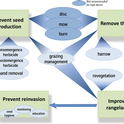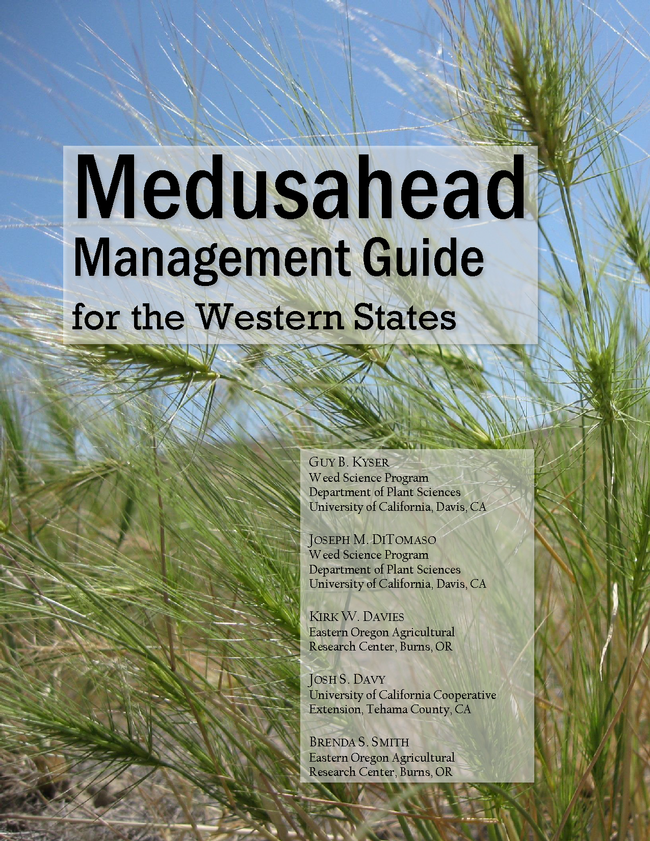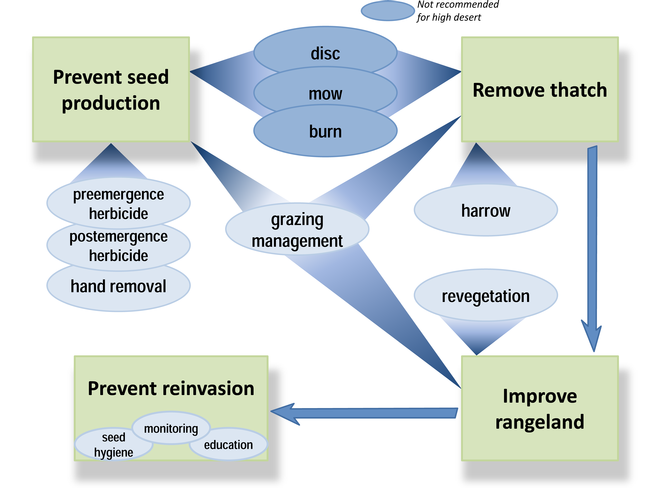Jun 30, 2014
Joe DiTomaso and I, with several other coauthors, have almost finished the “Medusahead Management Guide for the Western States.” This project is supported by a grant from Western IPM. In requesting funding for this project, we noted that
- Medusahead is a problem both on low-elevation foothill rangeland and in Great Basin ecosystems, and management is very different in these two regions. As a result, there is often confusion about the best management strategies for different areas.
- Each of the coauthors is asked to give several talks per year on medusahead control to growers' meetings in and out of state.
- There hasn't been a comprehensive, multi-state guide for growers recently, if ever, and there has been a lot of research on this topic in the last 10 years or so.
Sections in the Guide include:
- Introduction and spread (origins, distribution, mechanisms of spread)
- Impacts (forage and habitat, thatch, fire cycles, competition)
- Biology and ecology (taxonomy, water use, germination, establishment, reproduction)
- Management (low elevations, high elevations, economics)
- Mechanical control (hand removal, mowing, tillage)
- Cultural control (grazing, burning, revegetation, biocontrol)
- Chemical control (application techniques, risks, methods and timing for recommended herbcides)
- Integrated management (prevention, combinations of strategies)
The Guide currently clocks in at 67 pages, with about 50 photos and figures and almost 200 references. It will be available on line, and we hope to get a mini-grant to print hard copies for distribution to County offices.
The cover might look something like this:

And here's a graphic which explains everything:

Attached Images:

